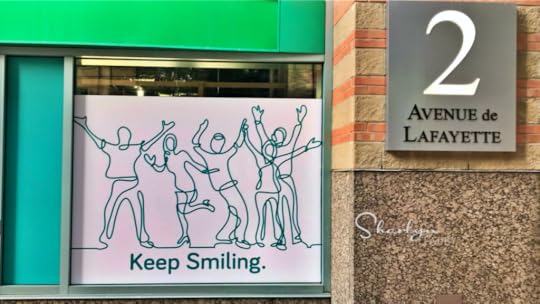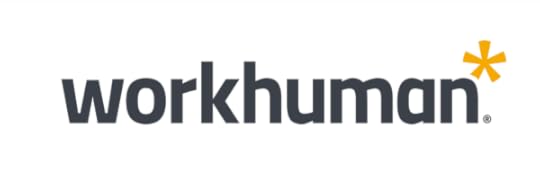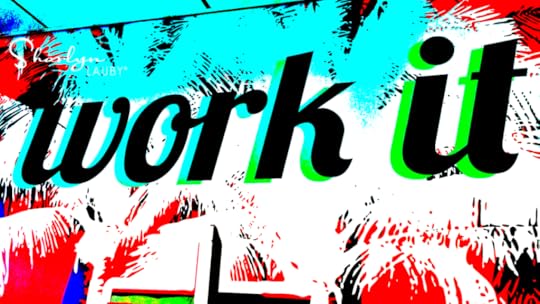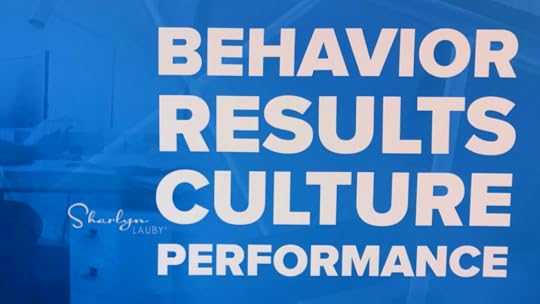Sharlyn J. Lauby's Blog, page 82
May 7, 2020
Bookmark This! Back To the Workplace Resources for #HR and #Business Pros

As more states share their plans to reopen, organizations are going to look to human resources departments to help them with the task. Everyone has the same goal: to bring people back to the workplace in a safe manner. Thankfully, there are some resources that have been created to help us do that.
If you’re not already aware of these three resources, you might find them helpful. And if you know of one that I missed, please share it in the comments!
The Society for Human Resources Management (SHRM) has created a Coronavirus and COVID-19 Resources Section on their website. It includes information about furloughs, layoffs, and reduction in force. But I’m really liking the workplace checklists and forms. For example, there’s a screening procedures form as well as a back-to-work checklist.
WorldatWork’s has also created a COVID-19 Resources Page that talks about remote work, caregiving benefits, and sales strategy. Something I like about this page are the Quick Poll Results. They’ve been asking questions on the topics of hazard pay, bonuses, and employer communications during this time. It might give you some things to discuss with senior management.
If you like getting some of your news via Facebook, there’s a great group called the SHRM Annual Conference Networking and Events Group. It’s a group of HR professionals sharing and networking online. The group has a “files” section with business plans, workplace emergency response plans, and return to work checklists.
During times like these, I often find myself in search of information. Yes, at some point, I will be calling my risk management department and my legal counsel. But the information I find during searches helps me ask the right questions. It gives me good ideas. And because the workplace information is changing so rapidly, I like having a few sites bookmarked as my “go-to” starting point.
I hope that you and your loved ones are safe and well during this time. Mr. Bartender and I are sheltering-in-place like you. In addition to our work, we’re doing some fun things like trying to make sourdough starter. LOL! Please let us know if there’s something we can write about to make your work easier. Thanks as always for reading HR Bartender!
Image captured by Sharlyn Lauby while exploring the streets of Disneyland in Anahiem, CA
The post Bookmark This! Back To the Workplace Resources for #HR and #Business Pros appeared first on hr bartender.






May 5, 2020
The 2 Things Remote Employees Need And How to Give It To Them

(Editor’s Note: Today’s article is brought to you by our friends at Workhuman® [formerly known as Globoforce]. They help organizations energize their cultures and unlock employees’ passion and potential with the fastest-growing social recognition and continuous performance management platform. Enjoy the article!)
We’re starting to see areas of the world relax shelter-in-place restrictions and begin the process of reopening. But I think we can all agree we’re far from what we might call “normal.” Most of the plans I’ve heard involve a phased approach that will take months to open many businesses and schools.
For example, where I live, the governor just announced schools will continue to do distance learning for the remainder of this school year, even though businesses will slowly reopen. I wonder what that means for parents who will have homeschooling responsibilities. Will they need to remain remote employees to accommodate this situation? Or what about individuals who have been identified as higher risk. Should they continue to do remote work for the foreseeable future?
Honestly, I don’t know that I have all the answers about when workers can return to their physical office space. But I do know that remote work is still going to be around for a while.
Organizations Need to Support Remote Employees
In my opinion, the hardest part of being a remote employee is the feeling of disconnectedness. Most work environments rely on seeing employees to communicate. When employees can’t see each other, sometimes we forget that the need for connection still exists. There are two ways that remote employees can stay connected with the organization.
Let’s talk about the obvious one first. Employees need to feel connected via the work they do. This is the foundation for employee engagement. Employees want to know that their work has a direct connection to organizational goals. In a traditional office environment, employees make that connection via performance feedback from their manager and co-workers.
In addition, employees want to know that their goals are still relevant. If there’s a shift in organizational priorities, employees want to hear about it in a timely fashion and have a conversation with their manager about updating goals. It’s essential for managers to have regular conversations with employees about the work. And, it is essential for remote employees to have conversations with each other about the work.
The second area that employees want to feel connection is in their work life. If there’s one thing we’ve learned over the past decade, it’s that employees want to bring their whole selves to the workplace. It’s one of the things we love about being in a traditional office environment – the camaraderie.
Remember back when toilet paper was readily available, and our co-workers would decorate our office with it?! While we hated it back then, we’re missing it now. And, our boss remembered our work anniversary with a pizza party. Then there were those times when we would show our co-workers pictures from our kid’s graduation, our latest vacation photos, and pictures of our new dog after he chewed up a pair of expensive shoes (but he looked really cute doing it). While I’m being a bit tongue-in-cheek with these examples, you get my point. Research tells us that the key to employee retention is for employees to feel like they have friends and people who care about them at work.
There’s a Way for Remote Employees to Stay Connected
The question becomes: How do we give employees those two things – a way to feel connected at work and a way to stay connected with the team? Well, Workhuman offers two products that can help: Life Events® and Conversations®.
Life Events is a way for employees to share the milestones in their life. They include things like moving into a new home, getting married or having a child, or finishing a marathon. For many employees, their work family is just as important as their home family and they want to share these events.
We all know these conversations happen in a traditional work environment. They take place in offices, before meetings, in the hallways, and during breaks. Workhuman’s Life Events allows remote employees to share their happiness with the entire organization.
Conversations is a solution that allows employees to connect their work to the organization’s shared purpose. It focuses on feedback, check-ins, and goal setting.
And performance results are especially important right now. Employees want to know that they’re accomplishing stuff. Because getting things done feels good. With Workhuman’s Conversations, employees can create a dashboard that gives them a view of what they’re working on along with real-time feedback from others. This allows the employee to stay focused on results.

The reason I’m bringing up these two programs from Workhuman® Cloud is because Workhuman is offering them both to organizations for FREE until March 2021. In fact, Workhuman is also offering their signature Gratitudes product, which is focused on peer-to-peer recognition. (Yes, that’s not a typo. All three products are FREE until next year.) I asked Workhuman CEO Eric Moseley why Workhuman was doing this. “The world’s workforce is in social despair due to COVID-19, and it’s more important than ever that business leaders are creating and maintaining human connections with their entire workforce. It’s incredibly important that employee lives are being recognized and celebrated, gratitude and optimism is being shared, and managers have an ongoing cadence of check-ins with their teams. It’s our hope that these mission critical tools can help organizations connect their people during these unprecedented times.”
I have had the pleasure of working with the Workhuman team for several years and am always in awe of their generosity. Eric shared with me Workhuman’s goal of helping organizations through this challenge: “Humanity loves company and today’s distributed and isolated workforces are presenting a major challenge to business leaders when it comes to maintaining a strong company culture and keeping employees engaged. Now that we’re all separated, our relationship Infrastructure needs to be enhanced, nurtured, and celebrated because it’s really what’s getting most of us through this time.”
If you want to take advantage of this FREE offer (and why wouldn’t you?!) just sign up using this link. Again, the products will be free until March 2021. Workhuman is a company that cares about the future of work. They know that involves creating a more human workplace. Even during these challenging times, it’s possible to give remote employees the support they need.
Supporting Remote Workers Now Sets the Stage for a Successful Return
Let me leave you with this thought: I know right now remote work is on everyone’s mind. We’re trying to figure out how to make employee’s lives easier so they can focus on the work (along with all the other things going on). But employees are going to need this level of support not only now, but also as we transition back to the office environment and even after.
Great workplaces support their employees all the time, not just when things are tough. The key is creating the company culture that treats employees as humans all year long.
Image captured by Sharlyn Lauby while exploring the streets of Boston, MA
The post The 2 Things Remote Employees Need And How to Give It To Them appeared first on hr bartender.






May 3, 2020
Reopening After COVID-19: 7 Workplace Questions

We’re all reading and watching the news right now and seeing the same headlines about “reopening” beaches, shopping malls, businesses, and states. And we’re seeing the very spirited debate about the right time to begin this transition. I imagine that this debate will be going on for a while.
Regardless of your feelings about when the country should reopen again, I’m sure that everyone eventually wants to see things open up and a return to some degree of normalcy. It would be nice to have our workplaces return to the way things were as well. But as business professionals, we’ve got a lot of work to do before we can resume operations.
I was thinking about all of the questions that senior management teams should be asking themselves as they prepare to reopen operations. Here are seven that came to mind:
Have organizational goals and priorities changed? I’d like to think the answer is “yes”. Maybe a product launch will be delayed. Or a major technology implementation will be pushed off until next year. Organizations will want to figure out their revised goals and priorities for the next few months because they need to tell employees what to expect and where they will be focusing their work.
Are we ready to open? Based on the answer to #1, the organization needs to honestly assess the workplace situation. It could be that, as much as the company wants to open in the next thirty days, it makes more sense to do it in ninety because the company’s supply chain isn’t 100%. Or maybe the company would be better off with a phased approach over a longer time frame.
What’s our workforce plan for the next 3 / 6 / 9 months? What about next year? The answers to #1 and #2 are going to drive how many employees are needed and in what roles. If the organization doesn’t have those positions filled, what’s the plan? Organizations will also need to decide if there are any skills that they will build internally or the need for a contingent workforce to complement their staffing needs.
What do we need to keep employees safe? We’re not just talking about personal protective equipment (PPE) here, but should organizations enact steps like taking employee temperatures. And what will the organization do if an employee shows symptoms or tests positive in the workplace? Hopefully, no one will have to deal with this situation, but the time to discuss it is before it happens. This is a good conversation to have with your legal counsel.
Where are employees going to work? The answer to #4 might drive this. Organizations are not going to be able to simply send an email that says something like, “Starting Monday, everyone needs to come into the office. Normal business hours.” During quarantine, employees may have assumed caregiving needs. Many states have decided not to reopen schools or plan to continue distance learning. Organizations will want to work with employees on remote work arrangements.
Do we have the right technology? This ties into #5. One of the things I’m hearing from companies during this pandemic is that they were not well prepared in terms of having the technology tools in place for employees to work remotely. Organizations that find themselves with a larger remote workforce might need to look at their technology needs. For remote employees to be productive, they need reliable and secure technology.
What happens if there’s a relapse? Not just what will the company do if someone tests positive in the workplace (from #4) but what if your city / county / state reissues a shelter-in-place. Sad to say but this is within the realm of possibilities. While organizations had to react quickly initially, there’s no reason there shouldn’t be a plan in place now. And that plan should be communicated to employees.
When we first started learning about COVID-19, organizations had to make some fast decisions. That’s okay. And there are organizations that are still trying to figure it all out on some level. That may be okay too. But it could be very detrimental to our employees and our businesses if we open too soon and without a plan.
Hopefully, organizations and individuals never have to deal with this again. Hopefully, we bounce back quickly, start rehiring employees soon, and customers flood in. We all want the same things here. We want people to be safe and to have a vibrant economy. And if we do this right, we can absolutely accomplish both.
Image captured by Sharlyn Lauby while exploring the streets of Stillwater, MN
The post Reopening After COVID-19: 7 Workplace Questions appeared first on hr bartender.






April 30, 2020
3 Ways to Maintain Productivity While Working From Home

(Editor’s Note: Today’s article is brought to you by our friends at Kronos , a leading provider of workforce management and human capital management cloud solutions. Be sure to check out the Kronos HR & Payroll eSymposium scheduled for May 6, 2020 – a FREE single day of digital learning focused on pressing business issues. Enjoy the article!)
Now that organizations know their employees will be working remotely for a while, it’s time to get focused on productivity. Please don’t take my comment as organizations shouldn’t be supportive, empathetic, and aware of the challenges that this new working arrangement presents. But helping the organization focus on work, goals, etc. could be exactly what employees want and need right now.
Accomplishing a goal feels good. Many of you know that Mr. Bartender and I recently moved into a new home. We’ve been using our shelter-in-place time to do a few projects around the house like organizing the garage and hanging some pictures. It’s amazing how excited we are to be accomplishing those projects.
The Workforce Institute at Kronos has written about employee productivity as well as remote work recently, so I wanted to share a few of their articles with you.
Help your Employees Thrive in a Remote Work Environment with 3 Simple Steps
Even in times of disruption and uncertainty there are ways for managers to support the team and continue to deliver business goals. By setting clear expectations, keeping the lines of communication open, and consistently checking in with your employees, managers will be setting their teams up for success.
There is hardly an organization in the world that isn’t searching for additional productivity gains. With business operational costs on the increase and consumers watching their spending, we all need to focus on reducing costs and delivering more for less. One area to take a good look at for these savings is in our organizational structures. Over time, and rarely by design, our organization hierarchies have grown taller and thinner.
The 7 Habits of Highly Resilient Employees
Resilience is defined as the ability to bounce back from challenge, recover from stress, and move forward and thrive. A 2016 Harvard Business Review survey identified the ability to adapt as the most important skill for companies undergoing a digital transformation—more important than technical knowledge, communication skills or even customer-focused problem-solving.

Maybe now is the time to let employees tackle a few of those items on their work ‘to-do’ lists. Simply ask employees to name one project they haven’t had time to work on in the office that they can do from home.
That way, when employees return to work, they’ve accomplished things. The organization can then celebrate how much they were able to achieve while working remotely.
Image capture by Sharlyn Lauby somewhere off the coast of Miami, FL
The post 3 Ways to Maintain Productivity While Working From Home appeared first on hr bartender.






April 28, 2020
3 Ways to Create a More Human Workplace

(Editor’s Note: Today’s article is brought to you by our friends at Workhuman® [formerly known as Globoforce]. They help organizations energize their cultures and unlock employees’ passion and potential with the fastest-growing social recognition and continuous performance management platform. Enjoy the article!)
There’s a lot going on in the world right now. Organizations are looking for ways to support and retain their employees. To help HR and senior leaders gain a deeper understanding of how to better cater to core human needs, Workhuman recently released a research report on “The State of Humanity”. The report covers workplace topics such as safety, fair pay, work-life harmony, growth, inclusion and belonging, and recognition.
One data point that I found interesting was 21% of workers are looking for a new opportunity. Keep in mind that this report was created a few weeks ago when the unemployment rate was significantly lower, and organizations were having tremendous difficultly finding qualified candidates. Obviously, organizations want to address it by finding ways to support and retain employees. The question is how?
That brings me to the second part of the Workhuman report. Of the 21% looking for new opportunities,
33% say they’ve been sexually harassed at work (more than 2x higher than the survey average),73% have experienced burnout, and42% don’t trust HR.
Organizations have some work to do and the answer is more than just a policy or program. It’s about creating a more human workplace.
3 Key Drivers for Creating a More Human Workforce
In thinking about the report and what it takes to create a more human workplace, I was drawn to three business books I’ve recently read. The books focused on the concepts of purpose, autonomy, and engagement.
Driver #1 – Purpose. In Priya Parker’s book, “The Art of Gathering: How We Meet and Why it Matters”, she talks about the different types of gatherings that take place in business. For example, gatherings to exchange information, solve problems, and make decisions.
I understand that right now we aren’t super focused on gatherings. But virtual meetings are still a type of gathering. And some people might say, “Oh, it’s just a meeting.” and even “Virtual meetings are never very good.” But that’s exactly my takeaway from Parkers’ book. If we want more human workplaces, then we need better gatherings – both in person and virtually – that align with our organizational purpose. Because there’s a direct connection between purpose, organizational goals, and employee performance.
Driver #2 – Autonomy. Dan Pink writes in “Drive: The Surprising Truth About What Motivates Us” that there are three qualities in high-performing organizations: purpose, mastery, and autonomy. Purpose is about alignment with the organization. And mastery is having the tools to be successful.
But to me, the final quality – autonomy – is the hard one. It’s also especially important because it helps the organization achieve its strategic goals. Employees can become autonomous when they know the company’s purpose, they have the tools to do their job well, and they are given the ability to make things happen. Autonomy is the quality that sets high performing organizations apart from simply performing.
Driver #3 – Engagement. In the book “The Power of Moments”, co-author Dan Heath shares that moments are the key to helping employees and organizations reach their goals. Not just the celebratory moment when the goal is accomplished but all of the smaller moments (aka milestones or micro-victories) that happen along the way.

When organizations celebrate moments, they allow employees to see how far they’ve come and give them the motivation to do more. Organizations that create more moments ultimately create organizational momentum. And it’s that momentum that helps companies reach their goals, which benefits the bottom-line.
A Human Workplace Promotes Purpose, Autonomy, and Engagement
I like to think about these three drivers – purpose, autonomy, and engagement – like a three-legged stool. We need all of them to create a more human workplace. And we want them in a certain level of balance. Regardless of what’s happening in the business world, organizations need the best talent to meet their goals. That not only means hiring the best but keeping them.
It means creating a human workplace where employees understand their purpose, feel empowered to get the job done, and are excited about the future. We know you have a lot on your plate right now. Bookmark this page or download the report to learn more about “The State of Humanity”. I’m already hearing organizations talk about putting plans in place for when employees will be returning to work. Having a more human workplace should be a part of those plans.
Image captured by Sharlyn Lauby while exploring the streets of Orlando, FL
The post 3 Ways to Create a More Human Workplace appeared first on hr bartender.






April 26, 2020
5 HR Skills You Should Be Developing Right Now – Ask #HR Bartender

Years ago, I worked for an outplacement consulting firm. Part of the company’s role was to help individuals who were laid off find new opportunities. Today’s reader note reminded me that while some people were very upset about losing their jobs, others used the situation to pivot to a career they’ve been wanting to do for a while.
Hi Sharlyn! I know you must be crazy busy, so I appreciate you taking the time to read this. I recently got laid off and it’s the kick in the butt I needed to pivot my career after accidentally ending up in project management…and then staying in it for another 6 years. It’s something I’m good at but am not fulfilled by.
I have always been very interested in HR and had the opportunity to run some workplace culture initiatives in the past that I enjoyed quite a bit. I’m looking to choose between a couple of avenues I could go down career-wise and am hoping I might be able to get your expert opinion. What skills would you say helped you be as successful as you were in HR? Thank you in advance for any insight you can offer!
Instead of talking about my skills, I think this is an opportunity to talk about the skills that HR pros should be working on for the future. Honestly, there are lots of skills lists available via an internet search. The Society for Human Resource Management (SHRM) has a competency model. I’ve put together a few articles as well. This is one that I think is particularly valuable – 6 Ways to Improve Your Business Acumen in 2020.
I wanted to offer more than the typical HR skills list. So, if you’re trying to pivot to HR or looking to make a move in the near future, here’s my list of HR skills that you should be working on right now.
People Analytics. It’s not enough to know metrics anymore. HR professionals need to understand people analytics and how to manage a people analytics project. You don’t need to be a data scientist, but you should know enough to be able to comfortably hire one.
Artificial Intelligence and the Future of Work. EdX and MIT are offering a MOOC (massive open online course) on Shaping the Work of the Future. HR pros need to know when to buy, build, and borrow talent. They also need to know when to use bots (and AI) instead of hiring someone. The course is free.
Performance Management. Every organization – regardless of industry – cares about performance. It’s how they accomplish their goals. HR professionals will want to design performance management systems that help the company and employees improve performance. Oh, and they also need to be systems that everyone finds valuable and are willing to use.
Consulting. If there’s one skill that I feel has helped me over the years, it’s consultation. This one is also part of SHRM’s competency model. Whether you’re internal or external HR, it’s important to know the principles of being a good consultant. Check out Peter Block’s “Flawless Consulting” for insights.
Wellbeing and wellness. This one goes hand-in-hand with performance management. If organizations want a high performing workforce, they need to create the right environment. HR has the opportunity to set the stage through the development of wellbeing initiatives.
This list doesn’t mean that HR isn’t going to be responsible for directing recruitment, training and other employee activities. It also doesn’t mean HR won’t be relied upon for compliance matters. I really tried to think of a handful of things that I believe CEOs will want their HR departments to know in the future.
Given everything that’s going on right now, this is an opportunity for companies and HR to reshape expectations. HR pros have to ask themselves to what extent they want to drive the change.
P.S. The Society for Human Resource Management (SHRM) is offering a $200 discount on their seminars (except certification prep) using the promotion code YourFuture20. The seminars include topics such as creating a talent acquisition strategy, behavioral interviewing techniques, learning and development plans, as well as understanding people analytics. This discount code isn’t going to last forever, so if you’re looking for an opportunity to learn some new skills and earn recertification credits…now might be the time.
Image captured by Sharlyn Lauby while exploring the streets of Las Vegas, NV
The post 5 HR Skills You Should Be Developing Right Now – Ask #HR Bartender appeared first on hr bartender.






April 23, 2020
Mandatory Training Is Really Not the Answer

I’ve worked for plenty of companies that believed the way to get employees to attend training was to make it mandatory. While making a training session mandatory might accomplish the goal of getting employees to attend, it doesn’t accomplish the goal of getting them to fully engage. And that’s what really matters.
Employees are usually willing to show up to receive instruction. Companies simply need to let employees know that the program is important. But saying “it’s important” isn’t enough. There are three specific activities that organizations can do to demonstrate the importance of training.
Explain to employees “what’s in it for them” (i.e. WIIFM). Employees are smart. They know that they need to learn new things to stay relevant in the job they have and prepare for future opportunities. Educational programs can help do that. But if companies don’t tell employees what they will learn, then employees don’t know that the training session is important. Maybe we should take all the time and effort spent on communicating that the program is mandatory and refocus it on the WIIFM.
Ask managers to support training efforts. I hate to say it but another big reason that employees don’t attend a program is the manager (not the employee). As someone who delivers professional training, I can’t tell you how many times an employee will tell me that their manager doesn’t want them to attend. Managers should want employees to attend training and keep their skills fresh. Managers who don’t support training are stifling employee growth and potentially contributing to employee disengagement and turnover.
Hold managers and employees accountable for content. Instead of holding people accountable for attending a training program, hold them accountable for practicing the content. I’m not aware of a single company that spends time and resources to hold a training program so at the end of it, employees can do whatever they want. Instructional programs are designed with specific objectives. At the end of the session, employees should be able to do what the program objectives outlined.
Even when training is considered compliance related or required by some entity, the same activities still apply. Instead of telling employees that “Oh, we have to do this training because XYZ Government Agency requires it.”, just say “This program addresses these 4 requirements and explain how it will allow you to do your job better.” Managers should do the same to support program attendance.
Declaring training “mandatory” is easy but it doesn’t create the right environment. It’s better to direct those resources and energy toward explaining why the training is important, asking managers to support the program, and holding participants accountable.
The post Mandatory Training Is Really Not the Answer appeared first on hr bartender.






April 21, 2020
Kronos Spring eSymposium: FREE Learning Opportunity for #HR and #Payroll Pros

(Editor’s Note: Today’s article is brought to you by our friends at Kronos , a leading provider of workforce management and human capital management cloud solutions. The Workforce Institute at Kronos has a new book out, “ Being Present: A Practical Guide for Transforming the Employee Experience of Your Frontline Workforce ”. Yours truly contributed a chapter on performance management. I hope you’ll check it out. Enjoy the article!)
As human resources professionals we might be very focused on other things right now – and justifiably so. But now more than ever, it’s important to carve out time for professional development. Spending time learning will make us even more equipped to handle the challenges of today and bring additional value to the organization.
Regular readers of this blog know that our friends at Kronos have been offering a free educational opportunity each spring and fall for the past couple of years. This year is no exception. The Kronos Spring HR and Payroll eSymposium is scheduled for Wednesday, May 6, 2020 from 10a to 5p Eastern time. As someone who has attended this Kronos eSymposium in the past, I can speak from experience that Kronos delivers quality professional development that is really worth your time. Here’s a little sneak preview of this year’s agenda.
Kronos Spring eSymposium Agenda
Kronos shared with me that this year’s agenda is going to have four tracks – basic, intermediate, advanced, and compliance. But don’t let those track titles sway you. I found something interesting in every single track!
“Seeing is Believing: Charting Your Course to Presenting Data Visually” really caught my eye because I’m hearing a lot more conversation these days about storytelling. Yes, we’re being asked to spend more time crunching the numbers but it’s being able to turn the numbers into a compelling story that makes a difference.
Fellow Workforce Institute board member, Chris Mullen, is leading a conversation on “How Infusing Diversity, Equity & Inclusion into Your Hiring Practices Can Make You an Employer of Choice”. I know some industries are facing hiring freezes right now, but we know that won’t be the case long-term. Investing time now in our talent acquisition processes will prepare us for the future.
Another session that I’m looking forward to hearing is “The Cost of Doing Nothing: Change Management”. Organizations are facing some tough decisions right now. Being able to make good business decisions and successfully manage organizational change will be critical. From an HR standpoint, not only do we have to help the organization maneuver change but also help the individuals within the organization.
Finally, I’m excited to share that I’m going to be one of the panelists for the afternoon session on “Disrupting HR: How Prepared are You to Deal with Unprecedented Change?” We are living through one of the most unsettling times for individuals and businesses. This conversation will focus on what we can do as human resources professionals to bring value to the business.
Of course, this isn’t the entire agenda. But hopefully, I’ve piqued your interest. Now, I know some of you might be saying, “I know professional development is important, and this agenda looks terrific, but I simply don’t have the time.” Well, please read on because I have an answer that might change your mind.
Kronos Offers Digital Learning That is Being Recorded
One of the things I love about this eSymposium event is the flexible format. I can follow one track or switch back and forth to explore other programs. Here are the three reasons that I believe an event like this really makes sense for human resources and payroll professionals right now.
REASON #1 – Recordings. There will be recordings of every session and you’ll be able to download all of the session materials. So, if you’re not able to listen to the live sessions on May 6 OR your learning preference is to space your listening out over time, then you have that option. Personally, I especially like this when there are two topics that I want to hear and they’re both being presented at the same time. With recordings, I don’t have to worry about missing out on learning.
REASON #2 – FREE Quality content. I’ve been responsible for both human resources and payroll a few times in my career, so I like that this event brings together both payroll and HR. The eSymposium is also good way to encourage HR pros to learn more about payroll and vice versa. And because the event is free, the company can have multiple people sign up, listen to the content, and then maybe set up a virtual meeting to discuss the sessions. It’s a great way to bring the team together.
REASON #3 – Recertification credits. Let’s face it, recertification credits are important. Especially if budgets are tight (and going to get tighter) – again, the event is free. All of the sessions have been pre-approved by the Society for Human Resource Management (SHRM) and the Human Resources Certification Institute (HRCI). In addition, many have been approved by the American Payroll Association. Kronos will be providing a certificate of participation for your files.

This one-day eSymposium is designed to bring HR and payroll professionals education on the topics we deal with every day. It has the three ingredients many of us look for in professional development opportunities: 1) high quality content, 2) no-cost to attend, and 3) pre-approved for recertification. We all know this doesn’t happen very often.
Find some time to focus on your professional development. Sign up for the Kronos Spring eSymposium. Here are the registration details:
Kronos HR & Payroll eSymposium
Wednesday, May 6, 2020
10 a.m. to 5 p.m. Eastern Time
I look forward to seeing you there!
The post Kronos Spring eSymposium: FREE Learning Opportunity for #HR and #Payroll Pros appeared first on hr bartender.






April 19, 2020
Navigating Digital Information: 3 Questions to Ask

One of the more popular articles on HR Bartender is titled “Leadership Power: The 7 Types and How to Use Them”. Every one of us has power and it’s important to recognize the different types of power we possess, how much of each type we have, and how to use them in a positive way.
The reason I’m mentioning this older article is because of the seventh type of power listed, which is called informational power. We all know someone who appears to have access to valuable information. That’s an example of informational power. But I’ll add something to this definition. Given the amount of information available to us on the internet, individuals have power when they can effectively sift through all the noise and find correct, valuable, relevant information.
This is something I believe we need to take very seriously. I’ve mentioned before that we need to become more media literate and that media literacy is becoming a business competency. I few months ago, I watched a 12-session YouTube program from CrashCourse on media literacy. Well, they have a new one out on navigating digital information. Basically, the course is focused on how to evaluate whether the information we’re reading is legit.
The course offers three questions to consider when consuming digital information. The idea being that we should ask ourselves these three questions to determine if we’re comfortable with the information. And we should do this before we share the information via our social channels.
Who is sharing this information? This course introduced a concept to me called lateral reading. To learn more about a website or author, leave their website. Find out the author’s professional experience, educational background, and the process they used to present information. Did they go to an event? Read a book? Talk to experts? By reading laterally to other websites, we can learn more about the person and their credentials.
Why are they sharing it? Regular readers know that I often use the dictionary to help myself solve my information gaps. This course reminded me that there’s a difference between skepticism and cynicism. Skepticism is to doubt the truth of something. Cynicism is an inclination that people are motivated purely by self-interest. It’s okay to be skeptical and look to understand why someone is sharing information. Are they being transparent about it? That might lead to some cynicism.
What do others say about the information? When we read information, it’s important to understand if it’s fact or opinion. And are there any sources of evidence? We also want to remember that not all evidence is created equal, but the absence of evidence could be suspicious. Oh, and when we refer to evidence, keep in mind that all evidence might not be data. Images could be a powerful form of evidence.
As I think about these three questions and the course in general, the big takeaway for me was that navigating digital information well involves constantly being in touch with our biases. When we read things that seem too good to be true then maybe we need to take a few extra steps to confirm the information. Or when our favorite news source says something, double check with another source before sharing. It doesn’t take a lot of time to reconfirm. And if no one else is talking about it…maybe we need to wait a while before sharing. Because maybe, just maybe, it’s not correct.
I’d like to think that I don’t need to explain why being able to navigate digital information is so important. We’re dealing with a pandemic. During an election year. In the middle of a global recession. Consuming correct, valuable, relevant information is essential to our personal and professional lives. Hopefully, these three questions will help us be better informed.
The post Navigating Digital Information: 3 Questions to Ask appeared first on hr bartender.






April 16, 2020
A Tribute to Chris Fields @ResumeCrusade

Over the weekend, I heard the news that Chris Fields passed away. Chris was the owner of ResumeCrusade.com and the content manager for PerformanceICreate.com
Chris loved his family and friends. He was a fan of Prince’s music and the Ohio State Buckeyes. He was an advocate for great HR and a friend to me and many others. I know the world is a little less bright without him.
I found myself this weekend spending some time reading a few of the articles that Chris and I worked on together. He was a fabulous friend to HR Bartender and very willing to share his knowledge and expertise with us. As a tribute to him, I wanted to share with you some of the articles we worked on together and the astute things he said about job search. I think you’ll find his words of wisdom valuable.
How to Address Being “Forced Out” During a Job Interview
“If you’re negotiating a separation package or exit strategy, I would suggest asking for a non-disclosure agreement so the reason for the resignation never comes out. This way the employee can create the narrative that best fits them as they look for new work.”
How to Find the Right Resume Writer
“I always tell people to vet your resume writer carefully. Have a conversation with them and, if they are unwilling to speak to you, that’s not a good sign for sure. Three things that someone might want to ask a resume writer include:
What’s the process?Do you have any testimonials or ‘real people’ that can verify your work?Can I see examples of your work?”
What Job Title Should I Use on My Resume?

“Let’s talk about tweaking job titles. You may think I’m going to say ‘no’ to this one but I’m not. It depends. The first rule to tweaking job titles is to never tweak upward, meaning don’t change or tweak your title to a bigger position. So basically, don’t give yourself a promotion. However, if you are listed as an office coordinator or assistant, it’s okay to use administrative assistant, because they are the same thing – same duties.”
Does Providing References Mean You’ve Got the Job?
“If asked for your references, you should absolutely take that as a good sign. You’re probably a finalist. However, you should not assume you have the job. I often tell my resume clients, ‘You don’t have job until you have an official offer.’ That means until they call and negotiate salary and benefits, there is no deal!”
“No two resumes should be the same. You can say the same thing 10,000 ways, so, I would rephrase my resume and maybe add a detail or two that is specific but different from the plagiarized resume.”
“Companies choose the wrong person all the time and end up calling other candidates once they have realized the error, so why can’t you? Just tell them honestly, ‘It seems I made a mistake, and I am wondering if there is still an opportunity with your company.’ You want to be sincere as possible. So, if you have a point of contact name and phone number, call them and explain the situation.”
Words cannot begin to express how grateful I am to Chris Fields for his friendship and unselfishness. Cheers my friend. Cheers to you.
Image captured by Sharlyn Lauby at the 34th Street Graffiti Wall in Gainesville, FL
The post A Tribute to Chris Fields @ResumeCrusade appeared first on hr bartender.






Sharlyn J. Lauby's Blog
- Sharlyn J. Lauby's profile
- 10 followers



